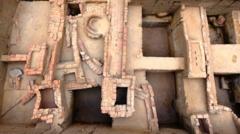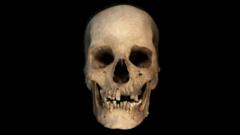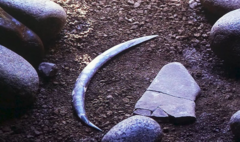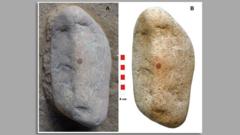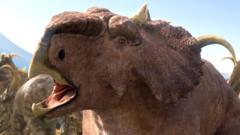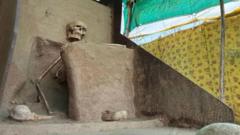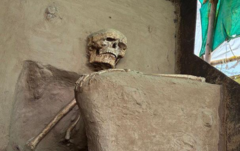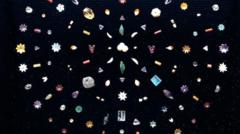Experts have identified the remains of at least 129 individuals, highlighting the historical significance of the find related to Roman confrontations with Germanic tribes.
Mass Grave Linked to Roman Battle Discovered Beneath Vienna Soccer Field

Mass Grave Linked to Roman Battle Discovered Beneath Vienna Soccer Field
Archaeologists uncover a significant Roman mass grave under a soccer field in Vienna, revealing insights into battles from nearly 2,000 years ago.
Archaeologists have made a remarkable discovery beneath a soccer field in Vienna's Simmering district, revealing a mass grave that dates back nearly 2,000 years to the time of the Roman Empire's conflicts with Germanic tribes. The excavation commenced in October, as a construction company began renovation work on the sports field.
The team from the Vienna Museum, which includes archaeologists and historians, announced this groundbreaking find, suggesting that the grave may be linked to a catastrophic battle event, possibly indicating a significant defeat for Roman troops who left the site in haste.
Radiocarbon dating of the bones has confirmed their age to be between A.D. 80 and 234. This timeframe aligns with a turbulent period marked by the reign of several Roman emperors, including Domitian and Trajan, who engaged in military campaigns against various Germanic tribes.
Artifacts uncovered along with the skeletal remains, such as an iron dagger, lance points, and pieces of scale armor, further establish the historical context of the grave. Notably, shoe nails excavated near one of the skeletons were identified as originating from the iconic Roman military footwear known as caligae.
Experts emphasize that such exquisite preservation of unburned human remains is exceptionally rare, particularly in the context of Roman burial practices, which predominantly favored cremation until the third century A.D. Michaela Binder, the lead anthropologist on the excavation, articulated the uniqueness of this find, stating, “For all of middle Europe from the first century, we don’t have any unburned, uncremated human remains. This discovery offers a unique opportunity to explore the life histories of individuals from the first century A.D.”

